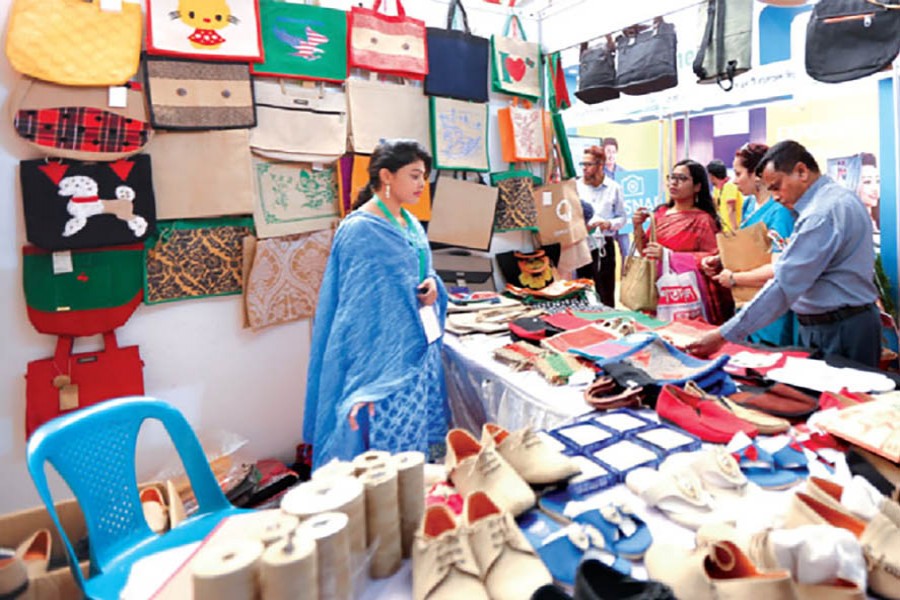Dishing out stimulus packages is only a part of the government move. How the disbursement process is worked out has assumed high importance given the immediate need for smooth implementation of the packages to mitigate COVID-19 fallout on businesses. The case in reference here is Tk 200 billion soft loan package for micro, small, medium enterprises (MSMEs) including cottage industries, announced by the prime minister last month. The loan package, despite the government's sharing of 5.0 per cent of the 9.0 per cent interest rate, is a bit challenging to implement, and unless a mechanism is in place to disburse the money to the target groups, the outcome is not going to be at all meaningful. The best that has, so far, emerged is that the central bank has wisely decided to provide half of the stimulus package, i.e., Tk 100 billion for the aforementioned clusters that constitute a major bulk of productive activities in myriad shapes and forms -- spread out all over the country. This decision was taken considering the liquidity crisis of the banks.
Following the central bank's guideline, commercial banks and financial institutions will provide loans or investment facilities to enterprises as working capital from their own fund on the basis of bank-client relations. The banks will have to disburse a minimum of 15 per cent of their yearly loan targets to businesses in villages and marginal areas from the stimulus package. The interest rate of this lending facility will be 9.0 per cent and the concerned industries and business organisations will pay 4.0 per cent, while the government will provide the remaining 5.0 per cent as subsidy, the guideline said. It further adds that banks will have to provide 70 per cent loans of their yearly target to the cottage, micro and small enterprises while the rest 30 per cent should be provided to the medium enterprises.
The BB circular, despite its merit, needs to make some clarifications and stipulate the modus operandi of loan disbursement. The Federation of Bangladesh Chambers of Commerce and Industry (FBCCI) has called for relaxation of the terms and conditions for disbursing loans so that every sector, especially the cottage, micro and small businesses, can receive funds on time. The FBCCI said the country has many cottage and small enterprises that are yet to come under the formal banking coverage but those have been badly affected by the coronavirus pandemic. Reaching out to these enterprises which cannot afford required collateral at this time is crucially important. It is indeed difficult to tell the number of such micro and small enterprises. Reportedly, their total number could be well over four million including small selling outlets, grocery shops and cottage industries in different districts. Observers and economists feel that providing these units with a good share of the stimulus package can only make the government decision a move in the right direction.
Now, how to allow a bulk of these units access to the loan calls for pragmatic and field-level efforts. Trade associations can play an important role in this regard. The authorities will need to work out a methodology whereby many of these units can be taken on board. FBCCI President Sheikh Fazle Fahim has said that the central bank and scheduled banks should reach out to them with easy rules so that they are benefitted by the bailout package. On the other hand, bankers have called for the formation of a credit guarantee scheme through which banks can recover the loans to be considered considered risk-prone. The proposed credit guarantee scheme will protect banks in loan recovery through insurance. The credit guarantee scheme is particularly needed for the cottage and micro industries as the majority of those enterprises do not have adequate financial strength. The SME Foundation has also strongly emphasised the urgent need of cottage and micro enterprises. Of the total businesses registered with the SME Foundation, 80 per cent are cottage and micro and 1.0 per cent small enterprises.
No wonder, the foremost concern for banks would be recoverability of the loans-- however low the rate of interest. Identifying the enterprises, especially the micro and small enterprises, may be rather difficult to work out. It is not known whether the central bank has categorised or not the sectors and sub-sectors in terms of their yearly turnover.
Observers feel that instead of just mentioning small and micro units for eligibility of loans, the guidelines should have spelt out the sub-sectors, prioritising them on the basis of their importance to the national economy in terms of productivity and employment generation. There is an apprehension that micro and cottage industries might be left out of the benefit unless the central bank stipulates in very clear terms the eligibility criteria based on their productivity, mode of operation, and marketing networks.


